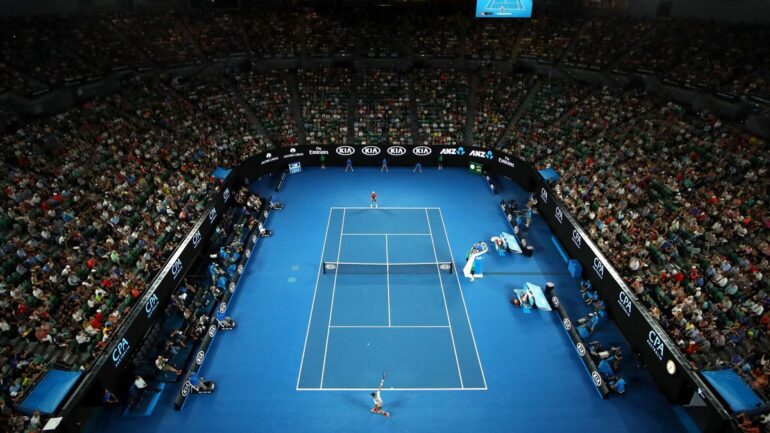TL;DR:
- Australian Open employs AI to simulate players’ lip movements and voices for multilingual marketing.
- Tennis Australia’s innovation drive aims to expand its audience and revenue.
- Players’ consent is not obtained for voice replication, but they will be consulted as technology advances.
- The primary goal is to enhance fan engagement and increase player and brand exposure.
- AI-generated videos already feature players like Novak Djokovic, Coco Gauff, and Daniil Medvedev.
- Camb.AI, a UAE-based startup, delivers AI “dubs” within 12 hours.
- Measures are in place to prevent controversies, including English subtitles for clarity.
- Future plans involve further image fidelity enhancements with player consultations.
Main AI News:
The Australian Open is setting its sights on an innovative approach to captivate a global audience. Leveraging the power of artificial intelligence (AI), the tournament aims to generate lifelike lip movements for top tennis players like Novak Djokovic, all while synchronizing them with computer-generated voices that impeccably mimic the tone and pitch of the athletes. This intriguing endeavor has already sparked quite a buzz during the tournament’s official “demo day.”
Tennis Australia (TA), the organization behind the Australian Open, is taking bold strides in technological innovation and startup investments to expand its fan base and boost revenue. Machar Reid, TA’s Head of Innovation, emphasizes that even though the players have not given their explicit consent for voice replication, they will have a say as the technology refines their digital representations.
The primary goal is to create a win-win situation. Fans will benefit from more engaging content, while players and brands stand to gain increased exposure in new markets, bolstering their profiles and expanding their reach.
A recent demonstration featured a video of Novak Djokovic speaking in Spanish, an uncanny representation of the world No 1. Reid outlined the project’s priorities, stating, “The priority is that it makes sense, second priority that it sounds like him, third priority is that lips are actually synced to what’s coming out of his mouth, which will come with the benefit of AI in time.”
Notably, the AI technology extends beyond Djokovic, with videos on the Australian Open’s YouTube channel showcasing the distinctive voices of other players, such as Coco Gauff and Daniil Medvedev.
These impressive AI “dubs” are crafted by Camb.AI, a company based in the UAE, and a participant in the Australian Open’s startup program. Remarkably, these digital creations are delivered within a remarkable 12-hour timeframe during the tournament.
Tennis Australia is taking measures to mitigate any potential controversies arising from translated content attributed to the players. Xavier Muhlebach, TA’s Head of Original Content, points out, “Players are obviously very protective of their image and how they are being portrayed.” To ensure accuracy and prevent misunderstandings, English subtitles are provided, referencing the transcripts of what the players actually said.
Machar Reid reveals that ongoing consultations with players are part of the project’s roadmap. He envisions expanding beyond audio translation to enhance the fidelity of the players’ digital representations. This aspect will require a consultative process, as altering someone’s image can be sensitive territory.
Craig Tiley, CEO of Tennis Australia and Australian Open Director, addressed financial concerns by defending the tournament’s fiscal health. Recent years have seen substantial government subsidies, but TA has invested in its in-house innovation program and forged partnerships with startups, with an eye on potential investments through its venture capital arm.
For TA, this technological foray aligns with their vision of making the Australian Open the ultimate fan and player-centric experience. Reid sums it up, saying, “Technology is such an instrumental part of what we do from a fan point of view, and we essentially want to try and elevate that and accelerate it in such a way that it benefits the player and the fan.” In this symbiotic relationship, the rising tide aims to lift all boats, with everyone reaping the rewards.
Conclusion:
The Australian Open’s embrace of AI-driven multilingual marketing signifies a strategic move to enhance fan engagement and expand market reach. By seamlessly replicating players’ voices and lip movements, Tennis Australia aims to create a win-win scenario, benefiting both fans and players. As AI technology evolves, player consultations and image fidelity enhancements will play a pivotal role in navigating potential sensitivities, ultimately shaping a more immersive and inclusive tennis experience for global audiences.

